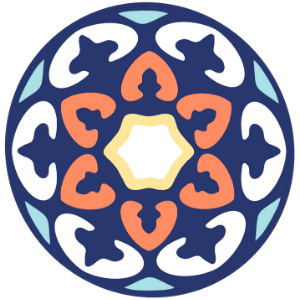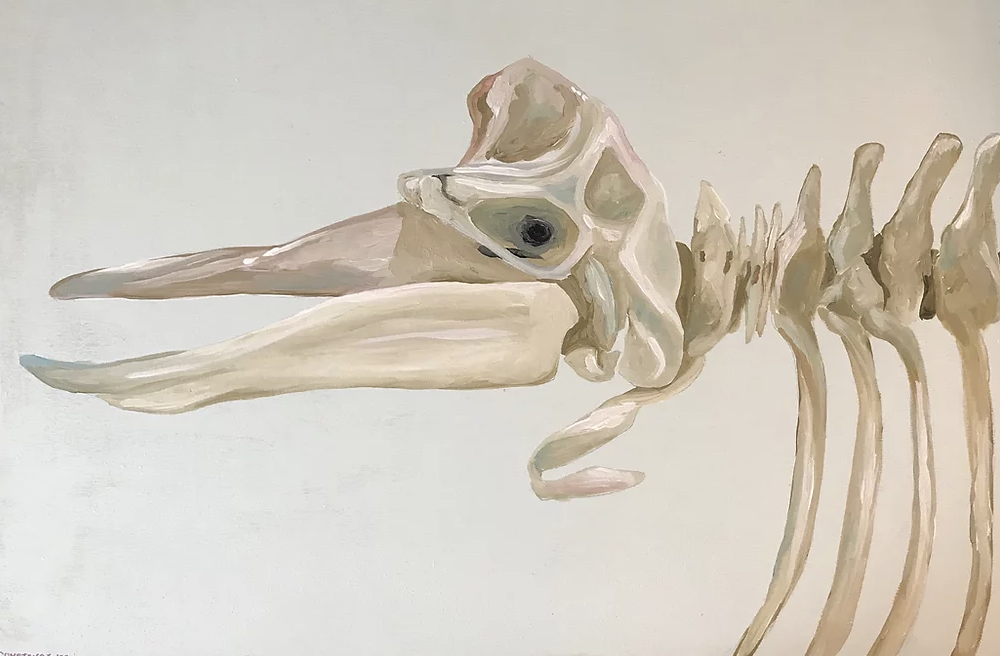Interview: Constance Sartor
Constance is an artist and scientist from Florida. Currently, she is the artist-in-residence for the Great Smoky Mountains National Park. Her scientific studies inspire her artwork and she uses magazines to create upcycled collages of various plants, animals, and ecosystems. On a larger scale, she also paints environmental-themed murals that can be seen at Mote Marine Aquarium, Bonehenge Whale Center, and Yellowstone National Park.
Tell us a little bit about yourself, your name and what do you do?
I’m Constance Sartor and I’m an artist and biologist. Currently, I live in Guam and work at the University of Guam Marine Laboratory studying the impacts of climate change on coral reefs at a genetic level. I’m also an artist who makes collages and murals based on the natural world.
Have you always been artistic? Why or why not?
I’ve created art ever since I can remember. As a young child, art was always there to keep me busy when I got bored.
What materials do you use to create your artwork? Is there a certain material you prefer?
I enjoy making ‘upcycled’ collages out of magazines because they’re a more environmentally-friendly material. Upcycling is also known as ‘creative reuse’ and is similar to recycling. Collage-making is a tedious process, searching through magazines to find the perfect color and pattern for the artwork. In contrast, I also like working with paint to create large-scale paintings or murals both indoors and outdoors.
Was there some or something that impacted your decision in creating artwork centered around/about science?
The natural sciences have always been a passion of mine because I spent a lot of time outdoors when I was younger, from swimming in the ocean to hiking in the hardwood hammocks in Central Florida. As a result, my artwork has almost always reflected the organisms found in nature. After pursuing a career in Biology, my art became even more focused on my scientific studies and with communicating science through my art.
Which is your favorite animal and why?
Currently, one of my favorite animals is the Little Brown Bat (Myotis lucifugus) for two main reasons (aside from being super adorable): because it sleeps an average of 19 hours a day and because it can fly. I’m someone who appreciates my sleep and also, I would love the ability to fly. I’ve never seen a little brown bat before, but hopefully, I will soon.
Which has been the most fun animal/creature you have created?
Creating the Glass Octopus (Vitreledonella richardi) collage during my expedition as an Artist-at-Sea for the Schmidt Ocean Institute was a super fun experience. After watching live video footage of the transparent cephalopod taken from the remotely operated vehicle (ROV) SuBastian, I found a range of blue hues to create the collage. Schmidt Ocean Institute recorded the highest quality footage of the Glass Octopus.
How did your interest in the ocean/different ecosystems begin and where do you see it going in the future?
My interest in the marine environment began when I was young, snorkeling in the coastal waters of Florida, and led me to pursue schooling in marine biology. Currently, I’m working in a marine genetics lab studying coral reefs, and I intend to pursue this in the future and educate people about the marine sciences through my artwork.
What is something weird or funny you have encountered?
Whenever I flip through old magazines–that were donated to me by people who were going to throw the magazines away–I find funny/weird images to add to my collection. My latest favorite is a photo of a woman sitting at a table with a white tablecloth eating spaghetti with none other than her pet chickens. The strange picture resonated with me because I have pet chickens that I’m very fond of, but we are not at the level of sharing a spaghetti dinner together quite yet.
What advice/tips would you give people of all ages interested in going into an art career that also encompasses science and ocean conservation or other environmental issues?
Read as many articles on current marine science studies as you can and try to talk to scientists and environmental organizations. I find that most people in this field are very enthusiastic and excited to share their research and you’ll learn unique facts from the experts. Go outside and explore nature any chance you get and look closely as the microfauna are just as important as the charismatic megafauna!
If you were a deep-sea creature, what would you be and why?
I’d be the dragonfish because it has evolved such a unique method for finding prey and navigating the deep sea. While most marine organisms emit and can see blue light, 9 species of dragonfish emit and can see red light. They produce a beam of red light from underneath their eyes and use it like a searchlight to sneak up on and track down their prey. Since no other organisms in the deep sea can see red light, the beam of light produced by the dragonfish is invisible to other fauna.










